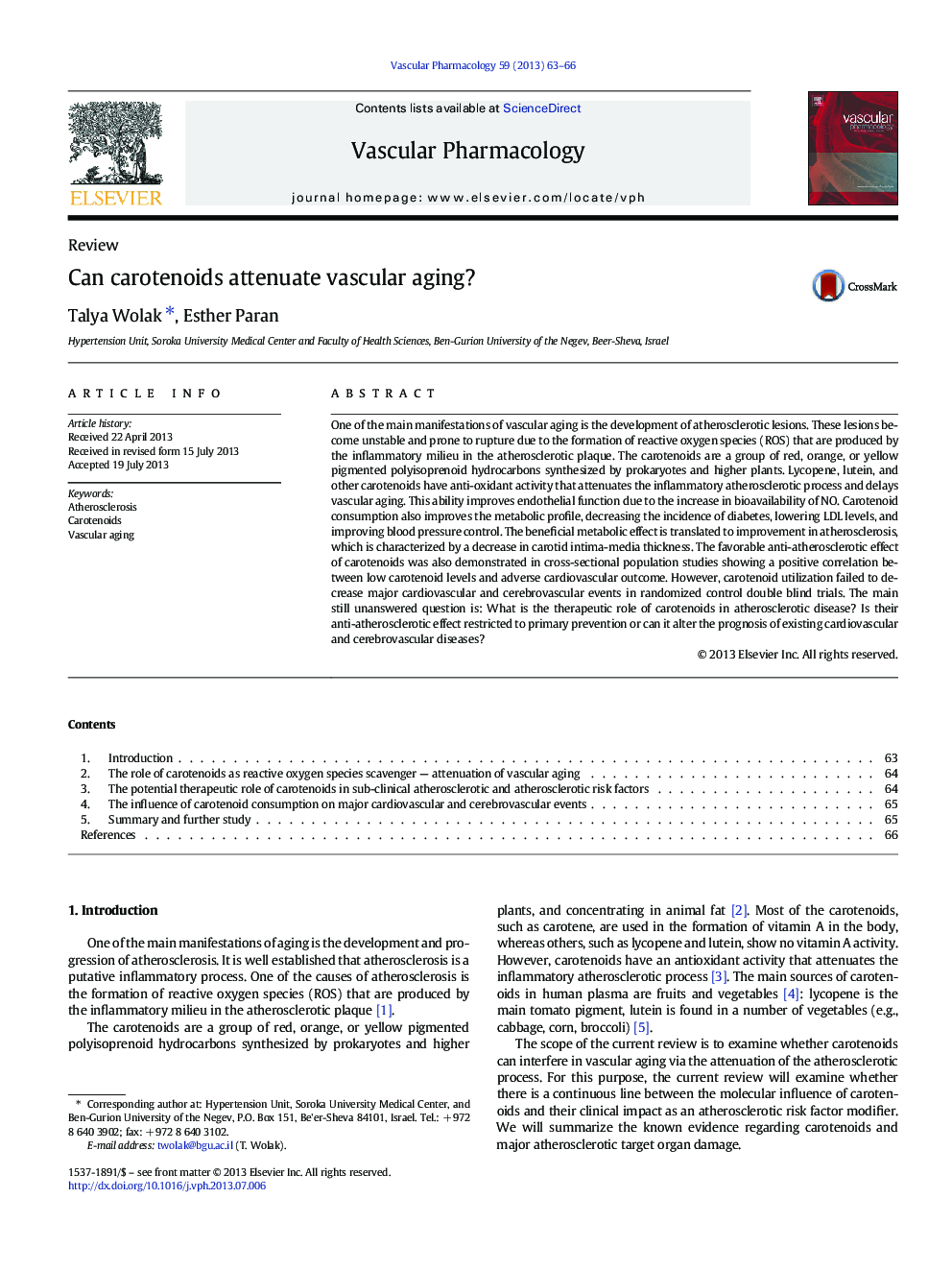| کد مقاله | کد نشریه | سال انتشار | مقاله انگلیسی | نسخه تمام متن |
|---|---|---|---|---|
| 2574249 | 1561255 | 2013 | 4 صفحه PDF | دانلود رایگان |

One of the main manifestations of vascular aging is the development of atherosclerotic lesions. These lesions become unstable and prone to rupture due to the formation of reactive oxygen species (ROS) that are produced by the inflammatory milieu in the atherosclerotic plaque. The carotenoids are a group of red, orange, or yellow pigmented polyisoprenoid hydrocarbons synthesized by prokaryotes and higher plants. Lycopene, lutein, and other carotenoids have anti-oxidant activity that attenuates the inflammatory atherosclerotic process and delays vascular aging. This ability improves endothelial function due to the increase in bioavailability of NO. Carotenoid consumption also improves the metabolic profile, decreasing the incidence of diabetes, lowering LDL levels, and improving blood pressure control. The beneficial metabolic effect is translated to improvement in atherosclerosis, which is characterized by a decrease in carotid intima-media thickness. The favorable anti-atherosclerotic effect of carotenoids was also demonstrated in cross-sectional population studies showing a positive correlation between low carotenoid levels and adverse cardiovascular outcome. However, carotenoid utilization failed to decrease major cardiovascular and cerebrovascular events in randomized control double blind trials. The main still unanswered question is: What is the therapeutic role of carotenoids in atherosclerotic disease? Is their anti-atherosclerotic effect restricted to primary prevention or can it alter the prognosis of existing cardiovascular and cerebrovascular diseases?
Effect of carotenoids on endothelial function parameters.Exposure of the endothelial cells to all the carotenoid solutions significantly improved their NO production (A) and decrease the level of ET-1, (B) in cells exposed to oleoresin(oleo) and lycopene (lyc). J Hypertens. 2013 Mar;31(3):521–9.Figure optionsDownload high-quality image (133 K)Download as PowerPoint slide
Journal: Vascular Pharmacology - Volume 59, Issues 3–4, September–October 2013, Pages 63–66